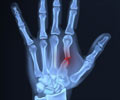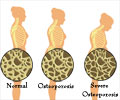Residents starting blood pressure medications had a 30-day fracture risk of 5.4 per 100 individuals per year, versus 2.2 for non-users.

Bone Fractures in Nursing Home Patients
“Bone fractures often start nursing home patients on a downward spiral,” said Chintan Dave, academic director of the Rutgers Center for Health Outcomes, Policy and Economics and lead author of the study. “Roughly 40 percent of those who fracture a hip die within the next year, so it’s truly alarming to find that a class of medications used by 70 percent of all nursing home residents more than doubles the bone-fracture risk.”‘#Bloodpressure medications significantly raise the risk of #bonefractures, doubling the likelihood of such incidents. #fractures #worldhypertensionday #pharma’





While many patients have high enough blood pressure that the benefits of treatment outweigh these dangers, "Such patients require careful observation, particularly when treatment begins, and that’s not happening,” Dave said. “Caregivers think of blood pressure medication as very low risk, and that’s not true in this patient population.” Dave’s team analyzed Veterans Health Administration data from 29,648 elderly patients in long-term care facilities from 2006 to 2019. Researchers compared the 30-day risk of fractures to the hip, pelvis, humerus (upper arm) radius or ulna (forearm) for patients who began using blood pressure medications with similar patients who didn’t. To maximize the chance that medication use — and not some other factor — drove the different outcomes, they adjusted for more than 50 baseline covariates, such as patient demographics and clinical history.
Further analysis showed drug usage predicted particularly elevated fracture risk in certain subgroups. Patients with dementia, systolic blood pressure above 139 (the first number in the blood pressure reading), diastolic blood pressure above 79 (the second number) or no recent use of blood pressure medication all experienced at least triple the fracture risk of unmedicated patients.
About 2.5 million Americans live in nursing homes or assisted living facilities. Up to 50 percent suffer falls in any given year, and up to 25 percent of those falls result in serious injury.
The Rutgers Health study indicates that blood pressure medication causes many of those falls and that a combination of less medication and better support could significantly reduce the problem.
Advertisement
Source-Eurekalert














